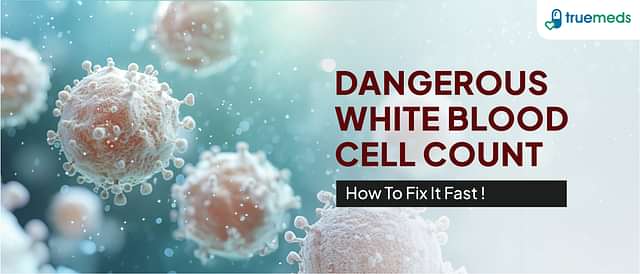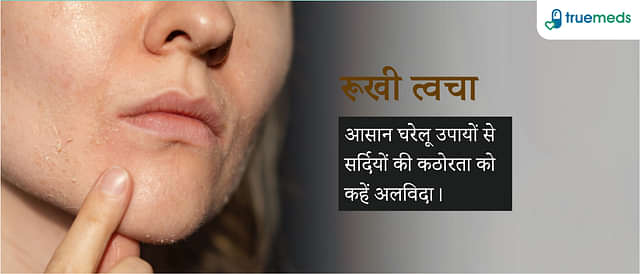Hormones in the body: overview, types and functions
Last updated on : 05 Mar, 2024
Read time : 6 min
What are hormones?
The hormones in the body produced and released by the glands in your endocrine system regulate nearly all of your body’s mechanisms. These chemicals assist your body’s functions, including metabolism, growth and development, emotional states, feelings, sexual function, and even sleep, to work together. The glands that make up your endocrine system are made up of several organs. Hormones in the body are created and secreted (released) by these glands, which are found all over your body. Hormones are chemicals that transmit signals from your blood to your organs, skin, muscles, and other tissues, allowing them to coordinate various hormone functions in your body. These signals instruct your body on what to do and when to do it.
Hormones are thought to be transmitted to their targets in the bloodstream after being released from the glands that secrete them. However, the definition of hormone has been expanded beyond the original meaning of a blood-borne secretion to include similar regulatory substances that are distributed by diffusion across cell membranes rather than through the circulatory system.
What is the hormone’s function?
Through the release of hormones in the body, the endocrine system regulates a wide range of bodily hormone functions. The number of hormones in your blood is constantly monitored by your endocrine system.
Hormones in the body are produced by the endocrine system’s glands and travel through the bloodstream to various organs and tissues throughout the body. Hormones tell these organs and tissues how to work.
When your hormone levels rise, the pituitary gland detects this and tells other glands to stop producing and releasing hormones. When hormone levels fall below a certain threshold, the pituitary gland can tell the rest of the body to produce and release more. This is known as homeostasis. Hormones have an impact on nearly every bodily hormone’s function, including:
- Metabolic rate
- Emotions and the state of mind.
- Fertility and sexual function
- Sleep.
- Blood pressure
- Functions of regulation and homeostasis
- Maintain the interior of the cell’s consistency.
- Tolerant functions; substance movement in and out of the cell
- Developmental function; aids in the development of the fetus
- Integrative function; usually balances two systems
Types of hormones:
Classification of hormones can be based on their chemical synthesis. Steroid hormones, peptide hormones, and amino acid derivatives are the three types of hormones. Because of their chemical properties, various types of hormones will have various pathways of action.
1. Steroids hormones:
Steroid hormones are lipid-soluble (fat-loving), which means they can freely pass through a cell’s plasma membrane. They bind to specific receptors in the target cell’s intracellular domain, forming an influential receptor-hormone complex. This triggered complex will enter the nucleus and bind to DNA actively, serving as a transcriptional activation for gene regulation. Hormones in the body produced by the reproductive organs are examples of steroid hormones (i.e. estrogen, progesterone, and testosterone)
2. Peptides hormones
Hydrophilic and lipophobic (fat-hating) peptide hormones cannot readily cross the plasma membrane. They entangle to cell surface receptors that are usually linked to proteins that are grounded from within (e.g. G proteins). The receptor complex initiates cell activity by activating a series of intracellular molecules called second messengers. Because the hormone is transmitted via internal intermediaries, this process is known as signal transduction. cAMP, calcium ions (Ca2+), nitric oxide (NO), and protein kinases are all examples of second messengers. Second messengers allow the initial signal to be amplified. Peptide hormones comprise insulin, glucagon, leptin, ADH, and oxytocin.
3. Amino acids hormones
Adrenaline, thyroxin, and triiodothyronine are examples of amino hormones derived from the amino acid tyrosine. Amine hormones do not all have the same properties as peptide and steroid hormones, but they do have some in common. Endocrine cells hold these hormones in the body until they are needed. They work by binding to protein receptors on the cell’s outer surface. The binding activates enzymes and other cellular proteins, as well as influences gene expression, by signalling a second messenger molecule inside the cell.
4. Human hormones
The endocrine system in humans is made up of glands, which are organs that produce human hormones. Glands produce and release a variety of hormones that target different parts of the body. There are glands in your neck, brain, and reproductive organs. Some glands are very small, measuring about the size of a grain of rice or a pea. The pancreas, which is about 6 inches long, is the largest gland.
Human hormones are produced by the following glands:
- Pituitary: This tiny gland is about the size of a grain, but it performs vital hormone functions. It produces hormones in the body that regulate the thyroid, adrenal glands, ovaries, and testicles, among other glands. The pituitary gland is in command of a variety of hormone functions, including the growth of your body. It is located at the base of your skull.
- Hypothalamus: The hypothalamus regulates the endocrine system. It determines when to tell other glands, including the pituitary gland, to produce hormones in the body using information from your nervous system. The hypothalamus is in charge of a variety of bodily functions, including emotions, appetite, sleep habits, and sexual function.
- Thyroid: The thyroid gland is a butterfly-shaped organ in the front of your neck. It’s in command of your metabolism, how your body uses energy.
- Para thyroid glands: These four tiny glands are about the size of a grain of rice. They control calcium levels in the body. Calcium is required for the proper functioning of your heart, kidneys, bones, and nervous system.
- Adrenal: You have two adrenal glands, one on each side of your kidney. They are in command of your metabolic activities, blood pressure, sexual maturity, and stress reaction.
- Pineal gland: This gland regulates your sleep cycle by releasing melatonin, a sleep-inducing hormone.
- Pancreas: pancreas is a core component of your endocrine system and also plays an important role in digestion. It produces insulin, a hormone that regulates the amount of sugar in your blood.
- Ovaries: The ovaries in women produce sex hormones such as estrogen, progesterone, and testosterone. Women have two ovaries, one on each side of their lower abdomen.
- Testes: The testes in men produce sperm and secrete the hormone testosterone. This hormone has an impact on sperm production, muscle strength, and sexual drive.
For the all latest coupons and offers on medicines, follow us on Instagram and Facebook
Disclaimer
Our healthcare experts have carefully reviewed and compiled the information presented here to ensure accuracy and trustworthiness. It is important to note that this information serves as a general overview of the topic and is for informational purposes only. It is not intended to diagnose, prevent, or cure any health problem. This page does not establish a doctor-patient relationship, nor does it replace the advice or consultation of a registered medical practitioner. We recommend seeking guidance from your registered medical practitioner for any questions or concerns regarding your medical condition.
Popular Articles
Recommended Articles
Recent Articles
Top-Selling Medicines:
...View more
Top-Selling OTC:
...View more
Subscribe
Registered Office Address
Grievance Officer
Download Truemeds

Contact Us
Our customer representative team is available 7 days a week from 9 am - 9 pm.
v3.7.5
Our Payment Partners

























































